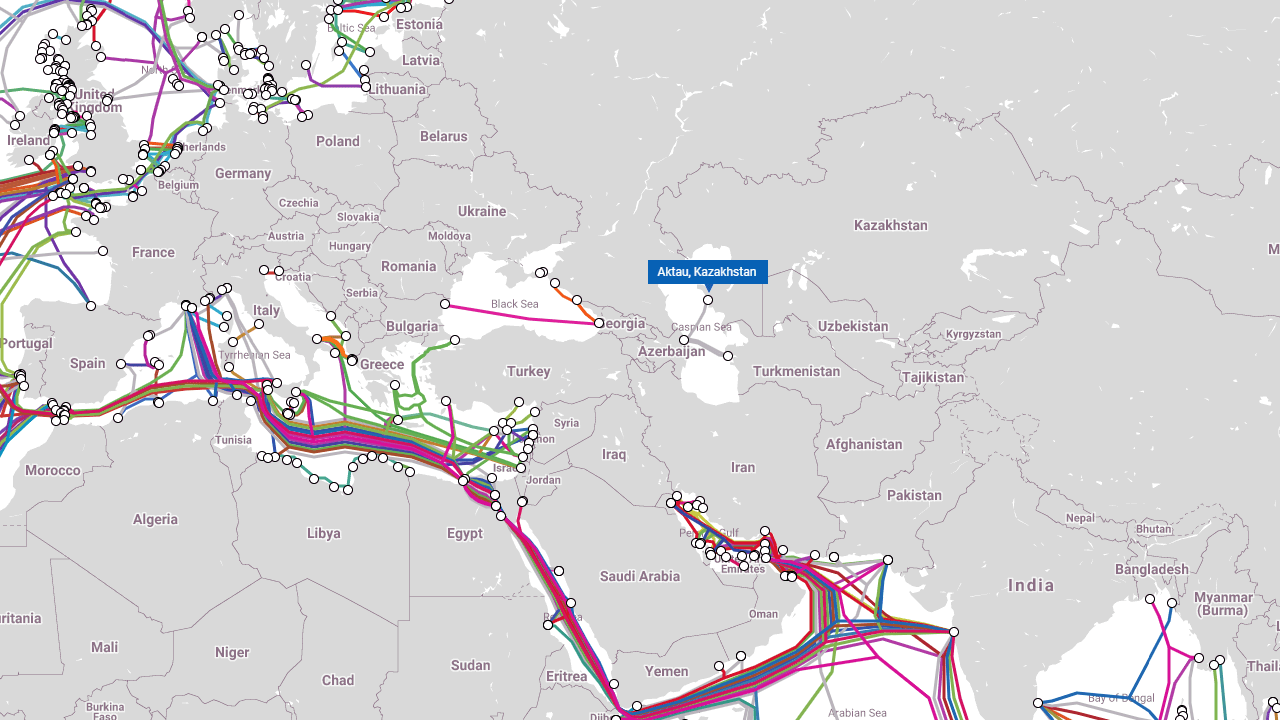As you all know we get access to the Internet via fiber optics submarine cables. So how do landlocked countries get access to the Internet as they cannot access the submarine cables that connect other countries?
Practically such landlocked countries get it from the landlines of neighboring non-landlocked countries by sharing the same or by a dedicated backbone till the landlocked country. In layman’s term, such countries run the cable over the land (often, under the land), the same as all of the not-coastal parts of countries that do have coastlines.

As you can see in the above image, Kazakhstan, which is the biggest landlocked country, gets its connectivity from Azerbaijan via its common to the Caspian Sea. Political clearance and alliance role is more important here because non-landlocked countries can easily disturb the connectivity due to any disputes.
However, these days, due to technological advancements, we rely on multiple ways to connect the Internet. But the fiber backbone plays a major role in higher capacity. This is why any landlocked country has multiple ways to connect to the Internet or have many backbones from all the possible sides.
In coming days, we are going to see more advanced ways to connect from sky.
Leave a Reply